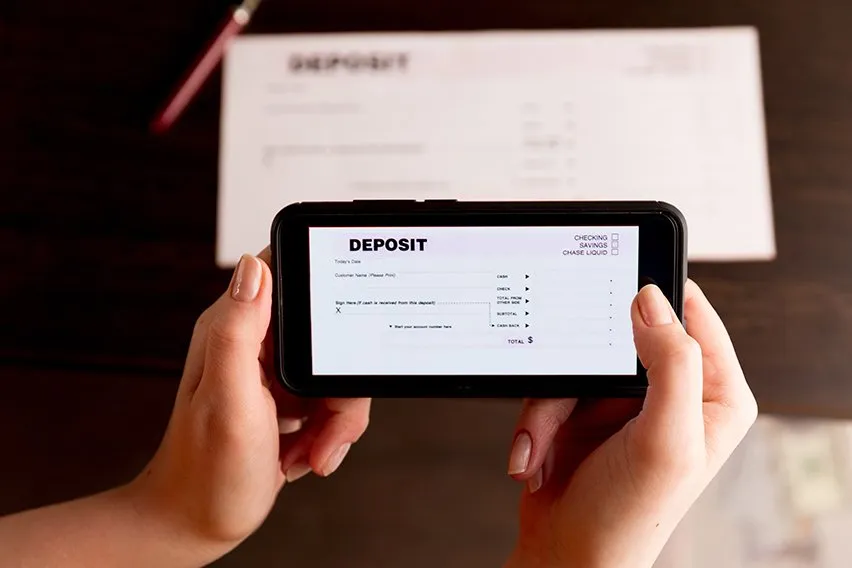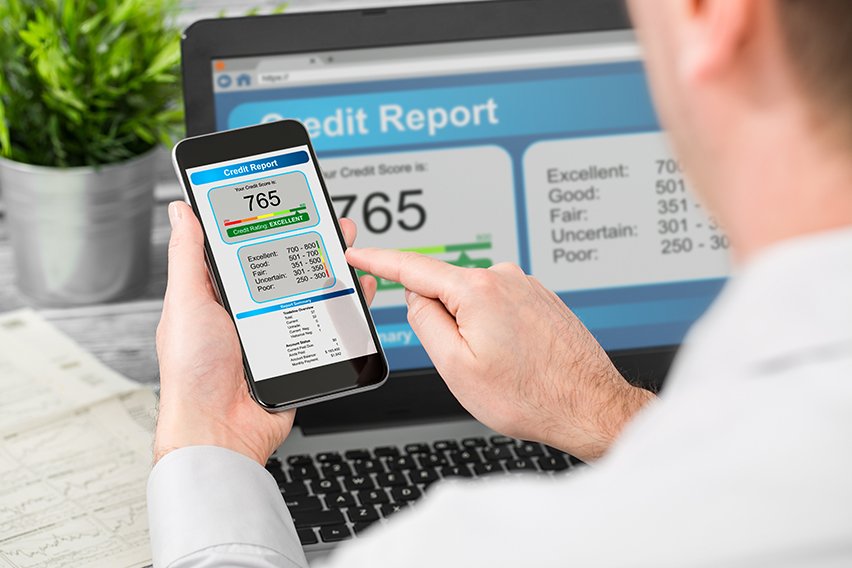What Is a Certificate of Deposit (CD) & How Does It Work?

There are all sorts of different bank accounts that you’re able to open and put money into. You can use traditional savings accounts for something like an emergency fund, for example. You can also use money market accounts through a financial institution such as a credit union.
Different types of bank accounts are going to give you a range of benefits depending on what you’re looking for. You might want a higher rate of return on the cash you deposit or you might have certain savings goals over a time period. All of that probably sounds fairly familiar.
But have you been wondering what a certificate of deposit is and how it works? It’s a special type of savings account. However, it doesn’t matter if you’re looking for more of a conservative type of investment outlet or are saving for a business goal. There are some specific rules and even withdrawal penalties to know about.
Here is a complete guide to certificates of deposit in finance and how they work.
Here’s What We’ll Cover:
What Is a Certificate of Deposit?
How Does a Certificate of Deposit Work?
What’s the Difference Compared to a Savings Account?
What Are the Pros and Cons of a Certificate of Deposit?
What Is a Certificate of Deposit Ladder and How Can You Build One?
Different Types of Certificates of Deposit
What Is a Certificate of Deposit?
Commonly referred to as a CD, a certificate of deposit is a special type of savings account that you can open. It’s a financial product that’s offered by financial institutions, such as banks or credit unions. And there can be several benefits to a certificate of deposit.
If your bank offers a certificate of deposit, you simply deposit a lump sum and agree not to touch it. In exchange, the bank will offer you an interest rate premium. That said, each financial institution might have varying rules.
Everything from the interest rates, conditions and the specific deposit terms might differ. Some banks might charge early withdrawal fees and others might not. But, the majority of banks or brokerage firms now offer multiple different types of certificate of deposit options.
The best thing that you can do is take a look around and do your own research. Some certificates of deposit can be much more advantageous than the best savings account you can find. So weighing your options can come in handy to see what might work best for your situation.

How Does a Certificate of Deposit Work?
If you want to open a bank certificate of deposit, it’s going to work very similarly to opening other types of bank accounts. But there are a few different types that can vary in their interest rates and the term length. The biggest difference is that when you sign the contract, you agree to leave your deposit there and not touch it.
The term length again depends on the bank, and it can range from as little as a few months to over 10 years. Basically, you leave the deposit in place until it’s able to reach maturity. Here are a few tips to help when you’re comparing different certificates of deposit.
- Review the interest rates. Some banks will offer locked interest rates. These help to provide a clearer picture of the return of the deposit you make. Other banks might offer a fixed interest rate. This means that it can’t get changed by the bank.
- Look into the principal. Again, each bank might have different limits to abide by. The principal is the amount of money that you agree to deposit. This is needed to actually open your certificate of deposit.
- Find out the term length. How long do you have to agree to leave your deposit? This is critical information to know. If you want to withdraw before the end of the term, chances are you will have to pay a penalty charge.
Traditional certificates of deposit are basically time-bound deposits. You earn interest on the amount you deposit and enter into an agreement where the bank can use your money for a fixed time. The bank will ultimately reward you by paying higher interest rates compared to a regular savings account.
As well, most banks will let you choose how long you want the term length to be. Some of the most common lengths will range anywhere from 6 to 24 months. They can also range from 3 all the way up to 6 years in some instances. Several credit unions and banks also offer custom term length options.
Once you’re able to determine the interest rate, principal and term length, you can make a more informed choice. You can decide which certificate of deposit will work best with what you’re looking for. Once you sign the contract, you can receive a financial statement each period.
This lets you stay up-to-date on your deposit amount with interest included.
Interest Rate and Annual Percentage Yield
It’s worth noting again that a certificate of deposit can come with varying terms depending on the bank. And, some banks might require different minimum balances. However, just because you have a longer-term doesn’t mean that you’re required to have a larger minimum balance.
An important factor to understand is the difference between interest rates and the annual percentage yield (APY). Both certificates of deposit and savings accounts earn compound interest. This means that any interest gets added to your principal periodically.
However, the interest rate is going to represent the fixed rate that you get with your certificate of deposit. The annual percentage yield is going to be the amount that you earn over one year.
What’s the Difference Compared to a Savings Account?
A certificate of deposit and a savings account work in similar ways. They’re both meant to set money aside. But there are some differences between the two worth knowing.
The easiest way to describe the difference between the two is that savings accounts allow you to change the balance. You can do this by making more deposits into the account, or even withdrawing an amount when you need to. A certificate of deposit requires you to leave your deposit in the account until its maturity date.
The longer you can leave the certificate of deposit, the more money you’re going to be able to make. This makes certificates of deposit an attractive option if you want to earn additional interest. And this is especially the case when compared to a typical savings account.
What Are the Pros and Cons of a Certificate of Deposit?
You’re going to have a hard time finding a financial product that comes with no risk. However, with a certificate of deposit, that risk becomes significantly reduced. This is because when you have a fixed and guaranteed interest rate, your return won’t change with market fluctuations.
Think about if you wanted to invest in something such as a stock or a bond. There can be a ton of risk due to potential volatility. You really have no way of guaranteeing a positive return. Just make sure that you invest with an accredited banking institution that’s federally insured.
Here are some of the biggest pros and cons of opening a certificate of deposit account.
Pros
- You can get a much more predictable rate of return for your investment. This is especially the case when compared to other, more volatile investments such as bonds or stocks.
- You’re able to get a higher interest rate compared to a typical savings account. That said, it depends on the type of certificate of deposit and the bank you open it with.
- Since you can’t access the money until its maturity date, you can save money without being tempted to use it.
Cons
- Certificates of deposit accounts aren’t able to get liquidated compared to savings accounts. This means once you deposit your money, you can’t take it out early without paying some type of withdrawal fee.
- If you have a fixed interest rate, you’re not going to be able to benefit from any rises in rates.
- You’re not going to see the same type of earning potential compared to bonds or stocks. Even though bonds and stocks are more volatile and unpredictable options.
What Is a Certificate of Deposit Ladder and How Can You Build One?
It was mentioned above, but a disadvantage of a certificate of deposit account is that you don’t benefit from interest rates rising. Overall interest rates are likely going to fluctuate throughout the term length. So, if rates rise, you end up missing out on the higher rates.
That said, if interest rates drop then you will benefit since you will be locked into the higher rate. But, there are a few things that you can do to try and address this issue. For example, building a certificate of deposit ladder and purchasing different term lengths.
Building a certificate of deposit ladder can help you take advantage of longer terms, all while allowing you to access a bit of your money each year. Basically, you divide the initial amount of your investment into a few equal parts.
You then take those separate investments and invest each one in a certificate of deposit that’s going to mature each year. Let’s break it down a little further.
Let’s say that you have $5,000 that you want to invest. To build your certificate of deposit ladder, you would break that initial amount into chunks. For this example, you decide to invest $1,000 in each of a 1-year, 2-year, 3-year, 4-year and 5-year certificate of deposit.
As each deposit account matures, you can then reinvest some of the money at current interest rates. Or, you can decide to use the cash for something completely different. If you decide to reinvest with additional deposits, you can then choose a brand new 5-year certificate of deposit.
Essentially, this helps to ensure that you can continue to have at least one account maturing each year. This is as long as you continue to build your certificate of deposit ladder. Let’s continue to break it down.
- You have $50,000 to invest
- You put $1,000 into a 1-year certificate of deposit
- You put $1,000 into a 2-year certificate of deposit
- You put $1,000 into a 3-year certificate of deposit
- You put $1,000 into a 4-year certificate of deposit
- You put $1,000 into a 5-year certificate of deposit
- When the $1,000 you put into the 1-year reaches maturity, you can invest it into a new 5-year certificate of deposit
- You can keep any interest that you earned and spend it on something else
- You can then do this again the following year once your 2-year certificate of deposit reaches its maturity
- This way, you will have at least one account maturing each year, as long as you continue to build your certificate of deposit ladder

Different Types of Certificates of Deposit
There are a few different types of certificate of deposit accounts that you can open with your bank or credit union. Here are some of the most common.
Liquid or No Penalty CDs
These types of accounts let you withdraw funds early without having to pay any type of penalty fee. It adds an extra level of flexibility to help access your funds if you need to. For example, you can move your funds into a higher-paying account if interest rates rise.
However, make sure that you fully understand any restrictions that come with a liquid certificate of deposit. You might be limited to how much you’re able to take out or when you can withdraw your funds. As well, you might even have to invest a higher initial amount compared to other certificates of deposit.
Bump-up CDs
Basically, you don’t get stuck with a lower interest rate with a bump-up certificate of deposit if rates rise. You can keep your current account and then bump-up to a higher rate if your bank is offering it.
It’s important to know that you are going to need to provide your bank with some advanced notice if you want to do this. This is since they’re going to assume you want to keep the existing rate if you don’t do anything. You also aren’t allowed unlimited bump-ups, so use them wisely.
Step-up CDs
This type of account comes with regularly scheduled increases for your interest rates. You won’t get locked into the initial rate that was available when you first invested. Typically, increases can come every six months or so, but it might depend on your bank.
Brokered CDs
A brokered certificate of deposit gets sold in a brokerage account. You purchase these from several different issuers and then keep them in the same place. This provides you with the ability to pick and choose which accounts you want instead of only using the selection your bank offers.
Jumbo CDs
If you have a lot of money that you’re looking to invest, a jumbo certificate of deposit might be a great option. Usually, these have a much higher initial deposit requirement that can be more than $100,000. It can be a great way to earn significantly higher interest rates if you have the money to do so.
Key Takeaways
A certificate of deposit is a way for you to invest a lump sum of money into an account. They’re different from regular savings accounts since your money is usually locked up for a period of time. And if you want to withdraw your money early, you might have to pay a withdrawal fee.
Opening a certificate of deposit account works similarly to opening other types of bank accounts. However, there are a few differences worth knowing. The biggest one is that once you sign the contract, you agree not to touch the funds until they reach their maturity date.
Certificates of deposit can allow you to get a more predictable rate of return on your investment. It’s especially the case compared to other investments such as bonds or stocks, which can be more volatile. Plus, since you can’t access your money until it reaches maturity, you won’t be as tempted to use it.
Essentially, a certificate of deposit allows you to earn more interest on the amount you invest. The bank will reward you with higher interest rates compared to a regular savings account, for example. Make sure that you discuss all the details and restrictions with your bank before signing an agreement.
This way, you won’t get caught off guard with things like withdrawal penalties. Plus, you can better understand the minimum deposit amount and the average rates. You can also build a certificate of deposit ladder, which will let you access your money earlier.
Did you enjoy reading this guide? Head over to our resource hub for more content!
RELATED ARTICLES

 What Is CVP Analysis (Cost-Volume-Profit) & How to Perform It?
What Is CVP Analysis (Cost-Volume-Profit) & How to Perform It? What Is a Recipient Created Tax Invoice (RCTI)? Australian Taxation Guide
What Is a Recipient Created Tax Invoice (RCTI)? Australian Taxation Guide What Are Trade Creditors?
What Are Trade Creditors? What Is a BSB Number & How to Get One?
What Is a BSB Number & How to Get One? What Is a Swift Code & How Does It Work?
What Is a Swift Code & How Does It Work? What Are Franking Credits & How Do They Work?
What Are Franking Credits & How Do They Work?